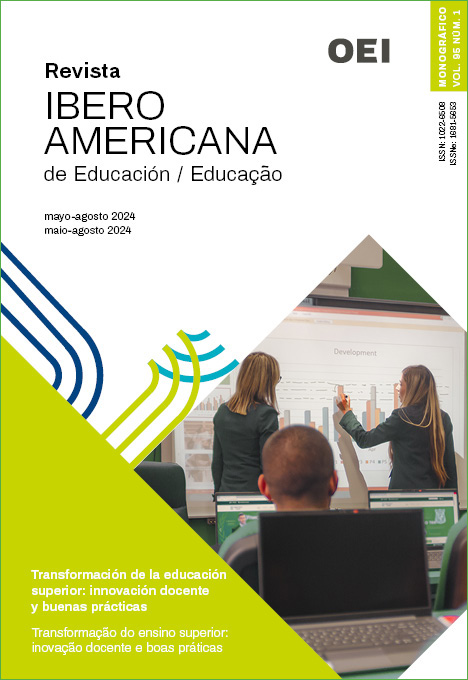Usos y percepciones de herramientas de inteligencia artificial en la educación superior en México
DOI:
https://doi.org/10.35362/rie9516259Palabras clave:
inteligencia artificial, tecnología educativa, educación superiorResumen
Con la llegada de la Inteligencia Artificial (IA) a la educación, resulta pertinente generar información que dé cuenta de las formas en que los actores educativos entienden e implementan dichos recursos para establecer acciones de formación y lineamientos para el aprovechamiento de esta tecnología para la mejora educativa. Este estudio tuvo como objetivo conocer la percepción y usos de herramientas de IA en términos de la frecuencia y tipos de uso, las expectativas educativas entorno a ellas, así como los contrastes entre opiniones del profesorado y del estudiantado. La metodología utilizada fue cuantitativa, transversal de alcance inferencial-exploratorio. Se obtuvo una muestra intencional de N=227 docentes y N=180 estudiantes universitarios. Se realizaron análisis descriptivos sobre percepciones y usos de herramientas de IA, para posteriormente realizar un análisis de varianza para muestras independientes. Entre los principales hallazgos se observa que, el 20% del profesorado y el 33% del estudiantado utilizan herramientas de IA. Del análisis inferencial se obtienen diferencias significativas entre profesores y estudiantes en relación con las creencias que tienen sobre el impacto de la IA en el aprendizaje, así como sobre la capacidad del profesorado para identificar cuándo el estudiantado utiliza dichos recursos en realización de tareas escolares.
Descargas
Citas
Aranda, C. (2022). Inteligencia Artificial Aplicada a La Educación: Logros,Tendencias y Perspectivas. Investigación Educativa Ante los Actuales Retos Migratorios, (pp. 1407-1419). Dykinson https://doi.org/10.2307/j.ctv2gz3wvn.112 DOI: https://doi.org/10.2307/j.ctv2gz3wvn.112
Bates, T., Cobo, C., Mariño, O., y Wheeler, S. (2020). Can artificial intelligence transform higher education?. International Journal of Educational Technology in Higher Education, 17(1), 1-12. DOI: https://doi.org/10.1186/s41239-020-00218-x
Castillejos L, B. (2022). Inteligencia artificial y entornos personales de aprendizaje: atentos al uso adecuado de los recursos tecnológicos de los estudiantes universitarios. Educación, 31(60), 9-24. DOI: https://doi.org/10.18800/educacion.202201.001
Chen, L., Chen, P., y Lin, Z. (2020). Artificial intelligence in education: A review. Ieee Access, 8, 75264-75278. https://doi.org/10.1109/ACCESS.2020.2988510 DOI: https://doi.org/10.1109/ACCESS.2020.2988510
González-Videgaray, M., y Romero-Ruiz, R. (2022). Inteligencia artificial en educación: De usuarios pasivos a creadores críticos. Figuras Revista Académica de Investigación, 4(1), 48–58. https://doi.org/10.22201/fesa.26832917e.2022.4.1.243 DOI: https://doi.org/10.22201/fesa.26832917e.2022.4.1.243
Keles, P. U., & Aydin, S. (2021). University Students’ Perceptions about Artificial Intelligence. Shanlax International Journal of Education, 9, 212-220. https://doi.org/10.34293/education.v9iS1-May.4014 DOI: https://doi.org/10.34293/education.v9iS1-May.4014
Lameras, P., & Arnab, S. (2021). Power to the teachers: an exploratory review on artificial intelligence in education. Information, 13(1), 14. DOI: https://doi.org/10.3390/info13010014
León R , G. D. L. C., y Viña B, S. M. (2017). La inteligencia artificial en la educación superior. Oportunidades y Amenazas. INNOVA Research Journal, 2(8.1), 412-422. https://doi.org/10.33890/innova.v2.n8.1.2017.399 DOI: https://doi.org/10.33890/innova.v2.n8.1.2017.399
Loinaz, M. (2021). Sistemas Inteligentes en el ámbito de la Educación. Asociación Española para la Inteligencia Artificial. https://www.redalyc.org/articulo.oa?id=92551202
Macias, R. Solorzano, L. Choez, C. y Blandón B. (2023). La inteligencia artificial; análisis del presente y futuro en la educación superior. RevistaG-ner@ndo, 4(1). 861-887.
Mollick, E. R. & Mollick, L. (2023). Using AI to Implement Effective Teaching Strategies in Classrooms: Five Strategies, Including Prompts. The Wharton School Research Paper. https://doi.org/10.2139/ssrn.4391243 DOI: https://doi.org/10.2139/ssrn.4391243
Moreno, P. R. D. (2019). La llegada de la inteligencia artificial a la educación. Revista de Investigación en Tecnologías de la Información: RITI, 7(14), 260-270. https://doi.org/10.36825/RITI.07.14.022 DOI: https://doi.org/10.36825/RITI.07.14.022
Ocaña-Fernandez, Y., Valenzuela-Fernandez, L., y Garro-Aburto, L. (2019). Inteligencia artificial y sus implicaciones en la educación superior. Propósitos y Representaciones, 7(2), 536-568. https://doi.org/10.20511/pyr2019.v7n2.274 DOI: https://doi.org/10.20511/pyr2019.v7n2.274
Palacios, D. R., & Escudero, N. A. (2021) Percepciones sobre el aprendizaje con tecnología digital en la educación superior. https://go.oei.int/t2qwlx0x
Patricio, W., Acurio, P., Clemente, W., Cuchipe, C., Judith, D., Castro, N., Enrique, L., Zamora, M., Patricio, W., & Acurio, P. (2022). Implementación de la Inteligencia Artificial (IA) como Recurso Educativo. Revista Recimundo, 2, 404-413. https://doi.org/10.26820/recimundo/6.(2).abr.2022.402-413
Popenici, S. A., & Kerr, S. (2017). Exploring the impact of artificial intelligence on teaching and learning in higher education. Research and Practice in Technology Enhanced Learning, 12(1), 1-13. DOI: https://doi.org/10.1186/s41039-017-0062-8
Şeren, M., y Özcan, E. (2021). Post pandemic education: Distance education to artificial intelligence based education. International Journal of Curriculum and Instruction,13(1), 212-225. http://ijci.wcciinternational.org/index.php/IJCI/article/view/568
UNESCO. (2020). Artificial Intelligence and Education. UNESCO Publication. https://www.unesco.org/en/digital-education/artificial-intelligence
Cómo citar
Publicado
Número
Sección
Licencia
Derechos de autor 2024 Revista Iberoamericana de Educación

Esta obra está bajo una licencia internacional Creative Commons Atribución 4.0.
Aquellos autores/as que tengan publicaciones con esta revista, aceptan los términos siguientes:















